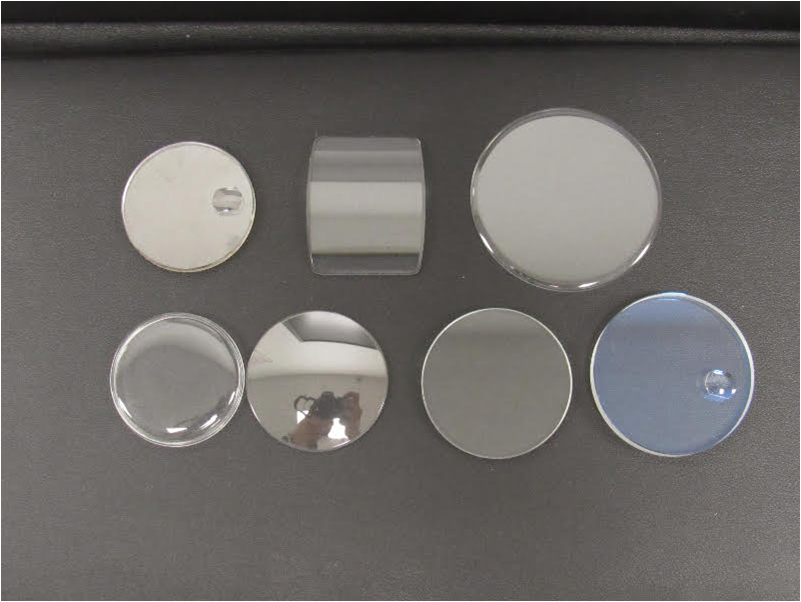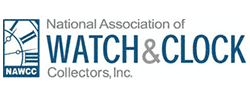How to Tell the Difference Between Watch Crystals
Posted by Rachel Nizinski on
Acrylic/Plastic
Acrylic crystals are really made of a strong form of plastic known as Plexiglass. Many vintage watches have this type of crystal as well, so if your watch has an acrylic crystal, don’t worry; this isn’t a sign of a fake watch if vintage. With these types of crystals, you can go outside without breaking your budget, as these watches tend to be very inexpensive and less likely to break. However, if you’re worried about your watch getting scratched, this isn’t a good choice for you in regards to crystals; they are the most scratch-prone of all of them!
Mineral
Mineral crystals are more common among watches, particularly mid-priced ones. They are more prone to being scratched than sapphire crystals, but less so than acrylic ones. You don’t want this crystal if you are worried about your watch breaking, though, as this one is most likely to do so.
Sapphire
Sapphire crystals are the most durable and scratch-resistant of the watch crystals---but at the same time, they are also the most expensive for these reasons. The material it is made of is the second-hardest in the world (diamond being the first). You are more likely to scratch other surfaces with this crystal because of it. While watches with pure sapphire crystals exist, most are made of a synthetic version in a lab through a means called flame fusion (which is also what these crystals are known as). Flame fusion crystals are also known for their bluish glare when in light.
How to Tell the Difference
As stated earlier, the primary means of distinguishing between different types of watch crystals is finding the price of the watch itself, which should be easy if you bought it from a trusted vendor. There is no other way to discern between different types of watch glass without scratching the surface, unless your watch has a sapphire crystal. If your watch’s crystal is acrylic, it will make a different noise when tapped on than sapphire or plastic will. You can also find the watch’s crystal type by Googling the case number, which can be found on the watch depending on the brand.
Getting Your Watch Crystal Replaced
Replacing a watch crystal needs the work of a professional, because doing so involves specialty tools based on how the watch is secured. Tools like these involve using liquid cement that is specific to watch crystals, a two-part epoxy, or ultraviolet glue for a crystal that’s glued in; crystal lifts for a compression fit, which is almost always an acrylic or sapphire crystal; or a crystal press for watches with a gasket or tension ring. Watch repair people will also measure the diameter and thickness of a watch, in addition to determining the material and shape of the crystal, a much more difficult task than it seems.

Watch crystal presses.
Custom-Cut
Custom-cut implies that the watch crystal is shaped in an unusual manner. This shape could be a heart, cloud, triangle, or anything else besides the standard circle. Since most crystals don’t come in these unusual shapes, a watch repair person is often called on to shape round crystals into those that match the shape of the dial whenever a custom-cut crystal needs to be replaced (which is another reason why you should hire a watch repair person, such as us!)
Choosing a Watch Crystal
With anything in life, there will be good and bad sides of it all. Watch crystals are the same, and you should think about these things when choosing a watch. If you care more about your immediate budget and don’t want your watch to break too easily, then an acrylic crystal for your watch would be best for you. If you care about more about quality and durability than your budget, a sapphire crystal would be better for you. Neither of these statements might apply to you, and a mineral crystal might be better for you in this case. And if your watch crystal is broken or scratched, please take it to a professional, unless you think you can do it yourself, which is highly unlikely due to the need for speciality tools for this process.
Sources:
- http://shsilver.com/watch-blog/2015/5/21/exploring-different-types-of-watch-crystals
- https://blog.esslinger.com/how-to-replace-a-watch-crystal/
- http://www.ofrei.com/page809.html
- https://www.quora.com/How-can-I-tell-if-my-watch-has-a-plastic-glass-mineral-glass-synthetic-sapphire-or-true-sapphire-crystal
Photos were taken by our in-house photographer, Alan Sanchez.
Share this post
- Tags: watch repair










